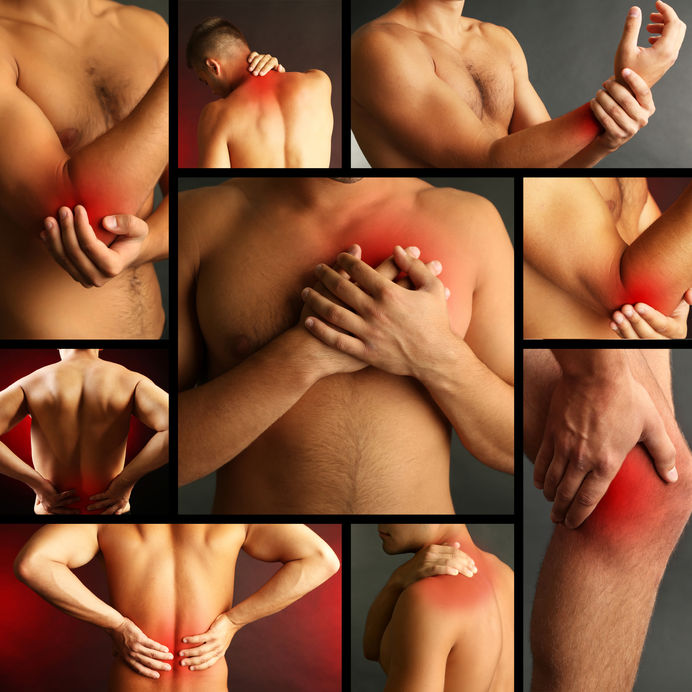Osteopenia vs. Osteoporosis
Osteopenia and osteoporosis are both diseases involving bone density, respectively, it being too low. Bone density is the measurement of density and the strength of bones. At a younger age, the body makes new bones faster than it breaks down old ones. This leads to an increase of bone mass. As we age, more old bones are broken down, than new bones are made. This makes our bones thinner and we are more prone to injuries and fractures.
It is a normal course, which usually starts after we have reached the peak of our bone density, at approximately the age of thirty. How fast one loses bone mass, depends on how strong the bones were at the time of the peak. Osteopenia is the forerunner to osteoporosis. Someone diagnosed with osteopenia has a lower bone density than normal, but not enough low to be diagnosed with osteoporosis.
Osteopenia starts at bone mineral density T-score of -1.0 and -2.5. Eating disorders, digestive, metabolism or malabsorption problems, can all lead osteopenia. Some medications and treatments, such as chemotherapy or radiation therapy, are also factors that may cause this disease. Once diagnosed with osteopenia, it is very important to undergo lifestyle changes and prevent losing bone mass any further.
The best way is to eat a healthy diet rich in calcium and Vitamin D. Other nutrients that affect your bone health are magnesium, vitamin K, vitamin A, B6, B9, B12, C, zinc, potassium, chromium, and silica. A healthy level of protein can also help you keep your bone strength. Exercising is another great method of preventing bone loss. Running, weight lifting, walking, swimming, and dancing are all great sports choices.
Soda consumption, alcohol, and tobacco, all affect your bone negatively, therefore you should limit the use of such products as much as possible. Thyroid problems may also affect your bone density, therefore if diagnosed with a thyroid condition, it is very important to get proper treatment. If even after all these measures have been taken, the bone loss becomes more severe, a person is diagnosed with osteoporosis.
Many won´t even know they have osteoporosis, as it usually doesn´t cause any symptoms. A broken bone, most commonly in the spine, wrist or hip, is what leads to the diagnosis. Many years after getting osteoporosis, one might notice back pain or a slight change in height. In severe cases of osteoporosis, even actions such as coughing or standing may cause painful fractures.
In some cases, this pain goes away as the bone heals, but many have long-lasting pain and have trouble being active. There are many risk factors that can increase the chance of getting osteoporosis. For example, women are more likely to get this disease as men. Age also makes a difference, as the older we get, the more prone are we to it. It is also known, that people of white or Asian descent are at a greater risk than people of other races.
Your family history also plays a role, as having someone in the family with osteoporosis increases your chance of getting it as well. This is especially the case if your parents are the ones with the disease. The body frame size is another risk factor. People with small body frames are more likely to being diagnosed with osteoporosis, as they have less bone to take from as they age.
Low sex hormones can also lead to the weakening of the bones. With women, it´s the sudden drop in estrogen levels during menopause. Women after menopause usually tend to develop osteopenia and osteoporosis, after the age of 50 years old. With men, it´s the loss of testosterone levels, which comes naturally with age.
If diagnosed with osteoporosis, your doctor might prescribe you biphosphonates; medication that slows down or prevents bone damage. Post-menopausal women may have to undergo a hormone treatment and take synthetic estrogen. Older men might have to undergo a hormone-replacement therapy. A change in your diet and lifestyle habits might also be necessary.
Risk factors for both of these medical conditions include:
• Gender: women are more likely to develop osteopenia and osteoporosis than men.
• Race: Caucasian and Asian women are at a higher risk for osteopenia and osteoporosis.
• Age: usually osteopenia and osteoporosis develop after the age of 50.
• Lifestyle: smoking, excessive alcohol or caffeine consumption, lack of exercise increase the risk for osteopenia and osteoporosis.
• Family history: If someone in your family has osteopenia or osteoporosis, you will have an increased risk as well.
Your physician will advise you best on what method is needed in your individual case. Some are more prone to developing osteopenia and osteoporosis than others.

follow me, i follow you upvote my reply